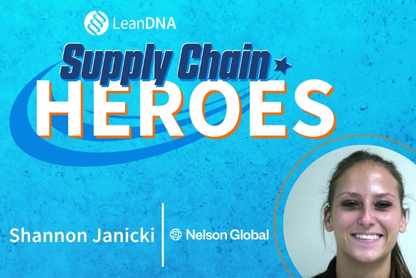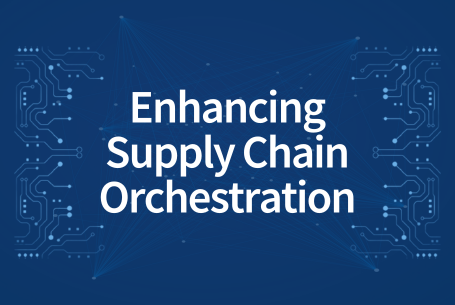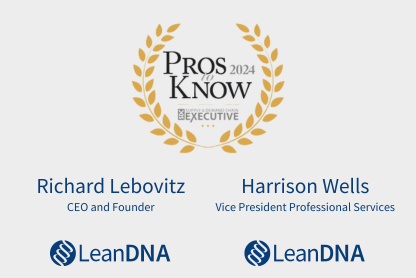That’s a wrap on NextGen Supply Chain Conference 2020. This year, Supply Chain Management Review (SCMR) set out to answer questions around what’s next for the supply chain. Leaders from across the world reflected on the effects of the pandemic on manufacturing and gave their advice on how to successfully improve supply chain efficiency in today’s “new normal.”
This year, supply chain agility was front and center, with several themes throughout the show on how top supply chains needed to improve supply chain efficiency and prepare their teams for whatever disruption comes next.
Supply Chain Managers’ Roles Have Evolved—Process Must Evolve, Too
It’s no surprise to anyone that today’s supply chain management role looks a lot different than it did thirty years ago, due to the rising complexity of today’s global supply chain and the increasing amount of technology used to manage it. In the fireside chat, “How to Manage The Supply Chain Of The Future,” Stephen Melnyk pointed out that today’s supply chain leaders must first manage through the complexity and develop skills to become powerful problem solvers within their organizations. He said, “Complexity is different from complication—complexity comes from the customers, complicated comes from what we do to ourselves.” And in light of the recent pandemic, they also must be prepared to operate with efficiency when disruption strikes, SCMR Editorial Director Bob Trebilcock underscored the “COVID didn't start this change, but it has accelerated the change.”
With so many tiers of suppliers and parts and new focuses on sustainability, security, responsiveness, today’s supply chain managers have a lot to master as they assume their roles as strategic leaders in their organization. According to Melnyk, in order to maintain control of the chaos of ERP data, today’s supply chain managers must keep it simple. Supply chain teams can no longer afford to spend all of their time in spreadsheets, compiling out-of-date data. They can leverage technology to gain supply chain visibility into every facet they manage, and take action quickly when needed. This way, they can free up their time to work on more strategic activities for their businesses.
Supply Chain Innovation Requires a New Way of Thinking
Although supply chain agility can be a big buzzword, many session leaders emphasized that the ability to make swift decisions begins with a culture change, not just technology implementation. Supply chain innovation and adoption is not a “build it and they will come” scenario. In order to create a culture of change and adoption, supply chain leaders need an experimentation mindset to do things a bit differently. The good news, according to Oracle’s Jon Chorley, was: “It’s never too early to start creating a resilient infrastructure that will let you grow and survive in the new normal.”
Vodafone’s Ninian Wilson implemented this structure of innovation at Vodafone by starting small. First, he enabled supply chain visibility for his team, developing digital scorecards that each person could track. He said that his first step allowed data to speak for his team, especially in conversations with his CFO. His next move is to “make the data act,” leveraging automation and AI to enable his team to move with agility and efficiency.
How can #manufacturers build agility? According to our CEO during NextGen 2020: Start small with one site, focus on your priorities, check out the results, and then standardize it across the organization. A manageable transition will reap the fastest results. #supplychain
— LeanDNA (@LeanDNA) November 11, 2020
Our CEO, Richard Lebovitz, agreed. Achieving agility in inventory management is definitely achievable, but it requires a new way of thinking. To build an innovative culture, Lebovitz suggested starting small by focusing on visibility and execution in one factory—and ensuring factories are connected to analytics. From there, supply chain leaders and buyers can focus attention on inventory excess and shortage priorities, check out the results, and finally, standardize best practices across the organization.
This manageable transition, in addition to leveraging supply chain visibility and AI to direct teams on clear, prioritized actions, enables teams to reap fast results in inventory optimization. Lebovitz accepted a NextGen 2020 Supply Chain Analytics award at the conference, where he highlighted how an aerospace manufacturer found huge success with this approach.
The NextGen 2020 Takeaway: A Healthy Supply Chain Operation Engenders Strong Business Results
Every single session made one thing clear: Supply chain management is the heart of every company’s operations, and the best time to start making improvements to the overall health of the business is right now. We know manufacturers need supply chain agility, but that's going to require an internal culture ready to change and a natural adoption throughout the organization. By leveraging technology in the right ways and implementing a culture of innovation, every business can reap the rewards of improved agility, speed, and efficiency.
Want to learn how other supply chain leaders are leveraging technology to propel innovation and team efficiency, in a manageable approach to adoption and change? Learn how Safran Seats GB implemented supply chain visibility and AI in their organization, reducing inventory by 36 percent.







